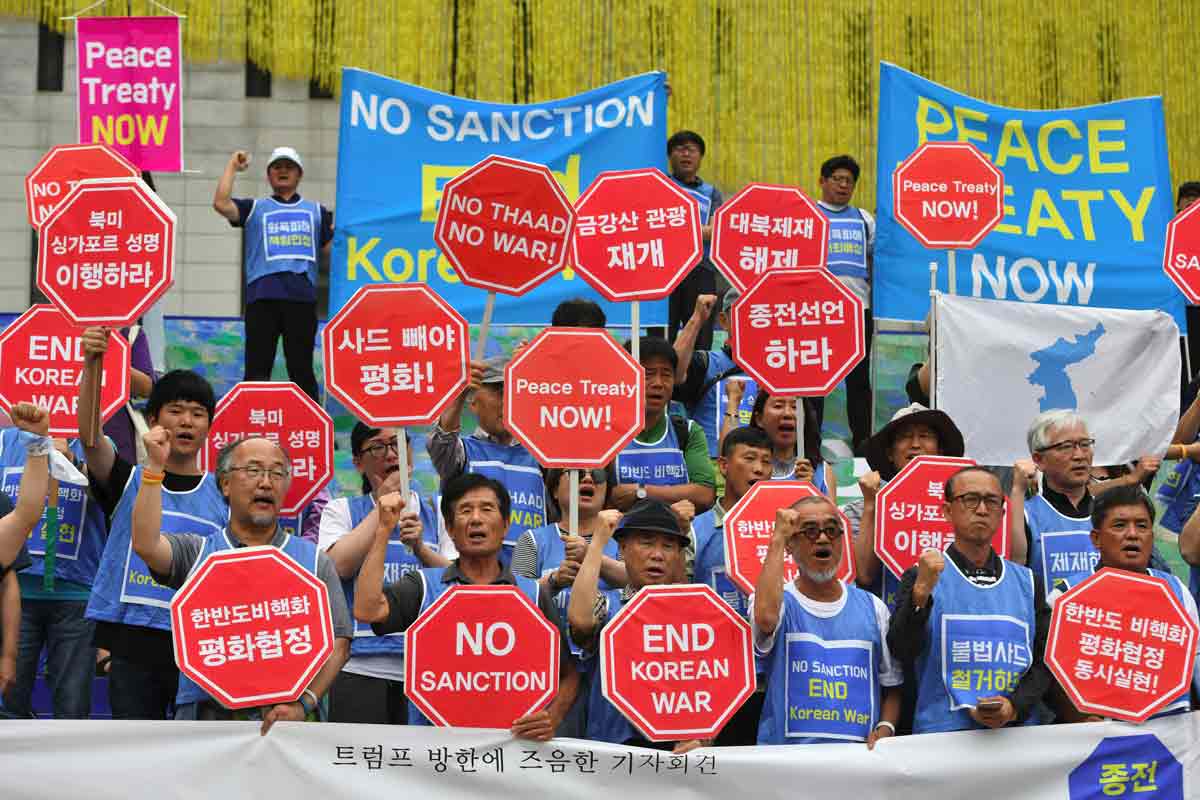The third meeting between Donald Trump and Kim Jong-un on the world's last Cold War frontier checked off all boxes for a spectacular blockbuster – the suspense, the theatrics, and the climax – but was far from a normal summit.
No formal communique was issued, leaving observers to interpret the two sides' individual pronouncements, whether by the leaders themselves or through statements and media.
We look at five takeaways from the weekend encounter:
What happens next?
After an hour-long meeting, Trump emerged to say the pair had agreed to restart working-level talks on the North's nuclear programme deadlocked since the collapse of their second summit in Hanoi in February.
"Over the next two or three weeks," Trump said, teams from each side "are going to start working to see whether or not they can do something".
The North's state media was less specific, reporting that the two sides will pursue "productive dialogues" and describing the agenda as the ambiguous "denuclearisation of the Korean peninsula".
But analysts say the demilitarised zone (DMZ) meeting took the two sides little further than they were after their landmark first summit in Singapore last year, when they agreed follow-up talks would happen – and any meaningful process will take a long time to reach a deal.
Who will take part?
Secretary of State Mike Pompeo will "spearhead" the United States (US) team and pick its members, Trump said, despite repeated demands by Pyongyang for his removal from the process.
On reports that North Korean negotiators were purged – with at least one executed – after the collapse of the second summit, Trump said he confirmed that the "main person" was alive, adding: "I would hope the rest are, too."
But the two men highlighted in the South Korean media reports were absent on Sunday.
Was this a summit? Will there be more?
The impromptu meeting – hastily arranged after Trump's Twitter invitation to Kim a day earlier –sparked fresh debate over what exactly to call the event.
The Wall Street Journal described it as a "spontaneous summit", while the Washington Post called it "private talks".
A former South Korean diplomat told the media that it was a "flexible" issue, given the unconventional way in which the meeting was arranged. "You can call it whatever you want," he said.
With the two having met three times in just over a year, and both sides appearing to appreciate the attention, more meetings can be expected.
Mr Kim goes to Washington?
Trump said he had invited the North Korean leader – who possesses multiple nuclear weapons and missiles capable of reaching the entire US mainland – to visit the White House.
A Kim trip to Washington would be spectacular, and would be another first in the dramatic sequence of unprecedented diplomacy, although Trump also said the visit would happen "at the right time".
Pyongyang has long wanted to be treated as an equal to Washington but KCNA's report on the meeting made no mention of Trump inviting Kim to the US capital. That suggests Trump may have expressed more of a future aspiration rather than a formal invitation.
Who's your friend?
Trump has repeatedly called the North Korean leader a friend, going as far as to say they were "in love", and at the DMZ meeting his affection was reciprocated... sort of.
Kim told Trump that their "good personal relations" had inclined him to accept Trump's spontaneous offer to meet.
Trump also called Moon Jae-in his "friend" on Sunday, which may indicate an improving relationship with the South Korean president after he helped arrange his third date with Kim. - AFP
